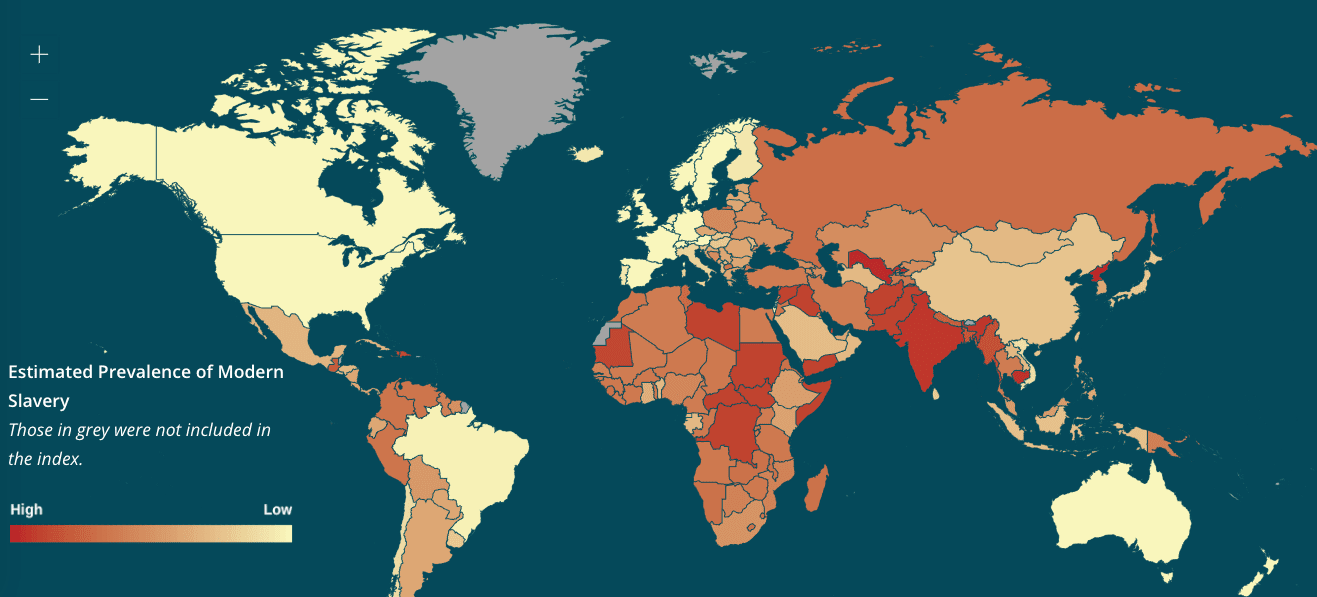Why Is the Primary Focus of The Public On US Slavery And Not Non White or Modern Slavery?
Executive Summary
- Media has entirely overfocused on one particular era of slavery in one particular country.
- To discuss broader and historical slavery is to face critique.

Introduction
There is a presentation of slavery that is nearly entirely focused on the slavery of a single country, and only of a single race. Slavery was only for a specific period, but was omnipresent in societies with the first ideas of abolishing slavery arising in England in roughly 1790.
Censorship on the Topic of Slavery
One question we have is if we worked at a university, would we have been able to write this article. It seems that it is necessary to write about slavery from the following specific perspectives.
The Reality of The Common Interpretation of Global Historical Slavery
- Specific interest groups, such as African Americans, demonstrate no real interest in investigating slavery outside of the US, as it appears to undermine their “unique” victim status. The fact that European traders arrived in Africa to discover active slave trading is lost on most African Americans.
- Muslims typically deny any involvement in any slave trade.
- Globally, the general view, outside of groups that study and track slavery, is that slavery, which does not involve European involvement is not worth discussion.
- Almost all slavery should focus on a country that had one of the smallest involvements in slavery (that is the US). Any other country that is not the US should not be held to account for its slavery.
- European based countries should absolutely be held to account for their involvement in slavery — but only European based countries. Any country that is not European based should not be held to account — and should have its slavery history minimized. The non-European countries are neither required to admit their history of slavery or even to stop participating in the practice.
The Bizarre Obsession on a Small Category of Slavery from Over 100 Years Ago
The focus on the Transatlantic Slave Trade and the fetishization of white on black slavery blinds us to the fact that slavery is still with us. According to the Global Slavery Index, there are 46 million slaves in the world presently.

This is the GSI’s index of slavery. The strongest regions of slavery are not those countries that were part of the Transatlantic Slave Trade. However, slavery is still a massive problem in Africa and in the Middle East, and India.
But the slavery that is a focus is the slavery of several hundred years ago, and the least consequential slavery (numerically at least), which is whites owning blacks.
Slavery = A White Black Dynamic?
Slavery today, cannot be effectively fought by continuing to think regarding slavery is a white and black dynamic. People owning slaves in Africa are black. However, some may enslave others at the behest of a foreign multinational. The Angolan diamond trade comes to mind. Often slavery is a black on black dynamic. However, the majority of slaves that exist today, according to the GSI are in Asia-Pacific, with 30.5 million slaves. This type of slavery has nothing to do with whites or blacks. This is Asian enslaving other Asians.
Once again, slavery in India is Indians enslaving other Indians. There is no European or white or black person anywhere. Indians not only have extensive slavery and slave-like conditions in India, but they are also currently importing bonded labor practices to the US, as we covered in the article How Indian IT is Bringing Bonded Labor to the US.
However, this is not an interesting subject to most of the world. Indians in the US and Europe, normally preferring to present a sanitized version of India to outsiders will not mention this in discussions. Indians do not discuss the history of slavery in India or its existence today, but would much rather discuss US slavery.
The Distain of Slavery, With the Corresponding Elevation of the Feudal System
It is ubiquitous for literature and popular movies to be told from the perspective of royalty. However, this brings up the question as to the distinction between the slave system and the feudal system, which we cover in the article How Different Was Slavery from the Feudal System?
Videos on Muslim Slavery
There are a number of great videos on Islamic slavery, which makes it rare how few people are aware of this history.
How slaves were taken in Islamic slavery in Africa is covered below.
This video argues that Mauritania is the last place where slavery is now not sanctioned. However, slavery is still alive and well in not only Mauritania but in many places in the Middle East, Africa, and Asia.
“Slavery and slave raiding, which never fully died out in the Sudan, have reappeared on a large scale in the disaffected southern region of the country which has been fighting off and on for autonomy against the Muslim dominated North.” – Slavery in the Arab World
People that like to use slavery as a backstop for arguments do not want you to watch this video.
Conclusion
The following holds true of the modern presentation of slavery.
- Countries that took far more slaves during the Atlantic Slave Trade do not seem to have any responsibility for far larger scale slavery in which they were part of.
- While the US received .002% of all of the recorded slaves transported from Africa, almost all of the responsibility for all slavery seems to, for some reason, be assigned to the US.
- If slavery was not the stereotype of whites enslaving blacks that it is not considered noteworthy.
- Any group can enslave another group, but it will not be noteworthy unless the group holding the slaves is white.
- Arabs are not held accountable for not only taking the vast majority of slaves from Africa but in having the highest levels of mortality and in the poorest outcomes for the slaves that they took.
- It is prevalent for Muslims to simply deny that their ancestors had anything to do with slavery. Muslims view the bringing of highly credible evidence of Muslim slaving as simply against-Allah, and therefore untrue. Slavery is the norm, particularly in the Gulf countries with imported coolie Indian and Pakistani and various other Southeast Asia labor as well as online slave trading of domestic workers, as is covered in this BBC article. However, again the primary interest is slavery that occurs hundreds of years ago and only slavery in the US. However,
- Muslims consider the historical coverage of Islamic slavery to also be racist and “Islamophobic,” and only want to talk about the Trans Atlantic Slave Trade.
- Pointing out the historical reality is often considered racist. To not be racist, it is necessary to agree with the historically inaccurate presentation that nearly all of the slavery in world history occurred in one period of time and in one country.